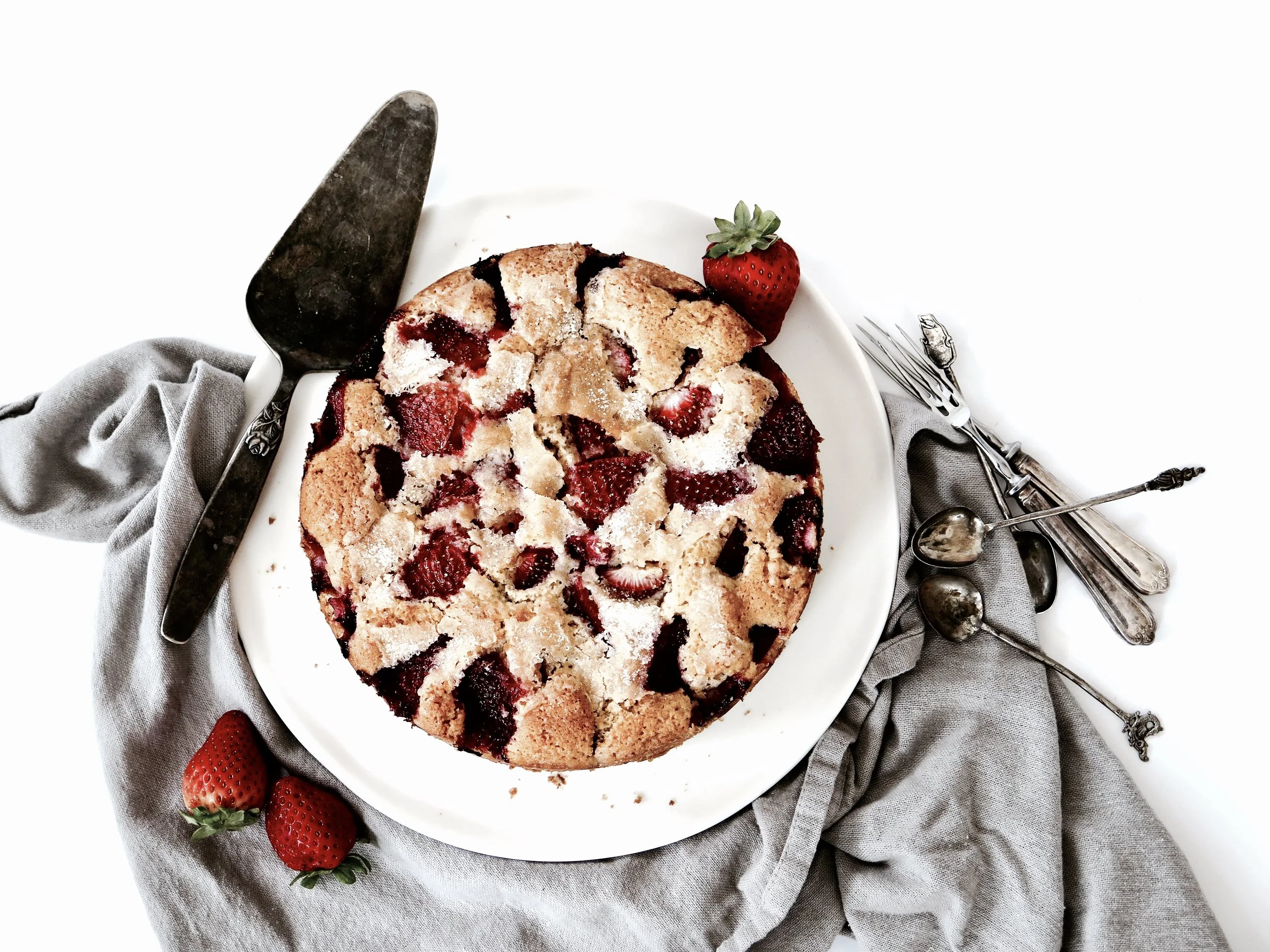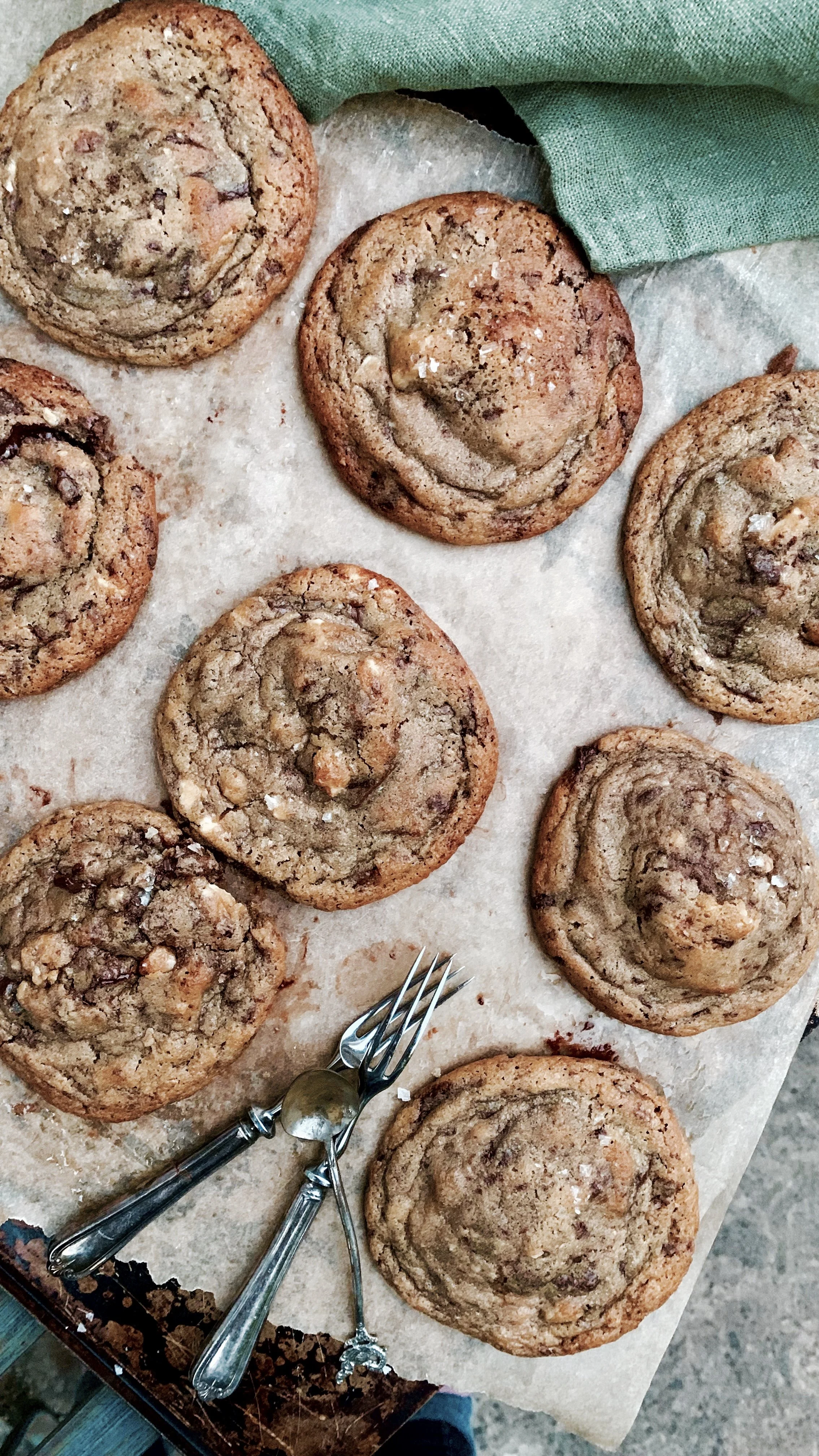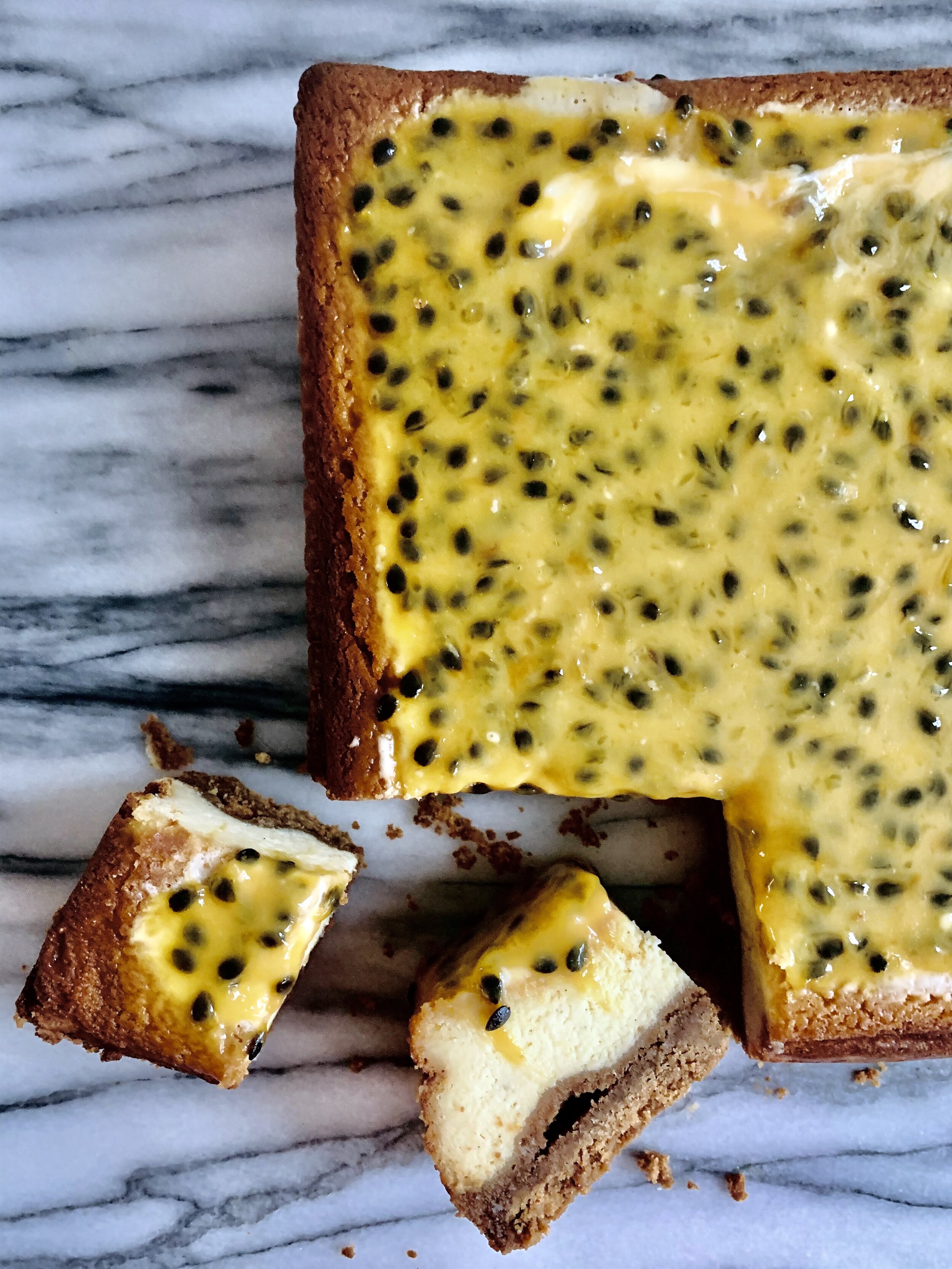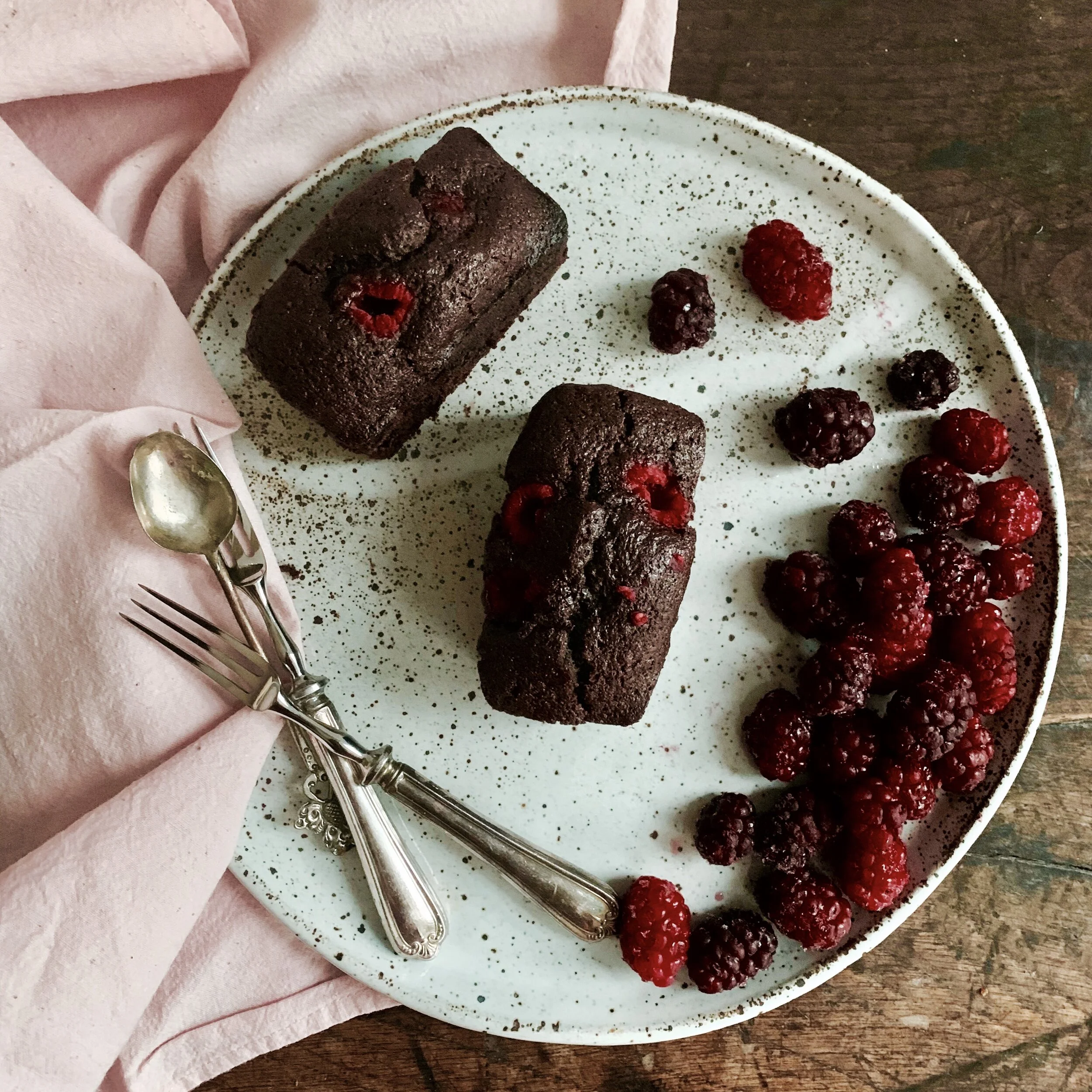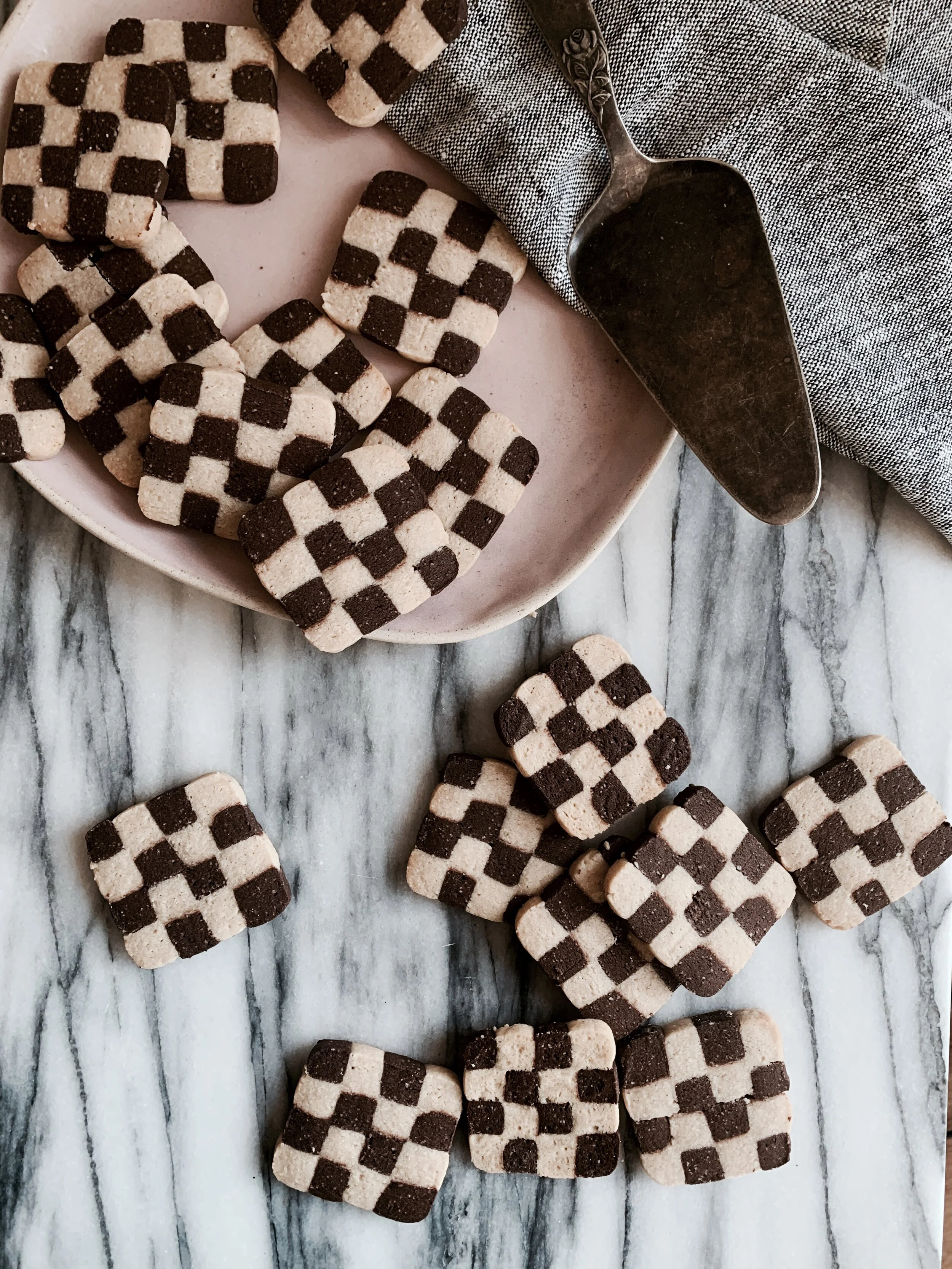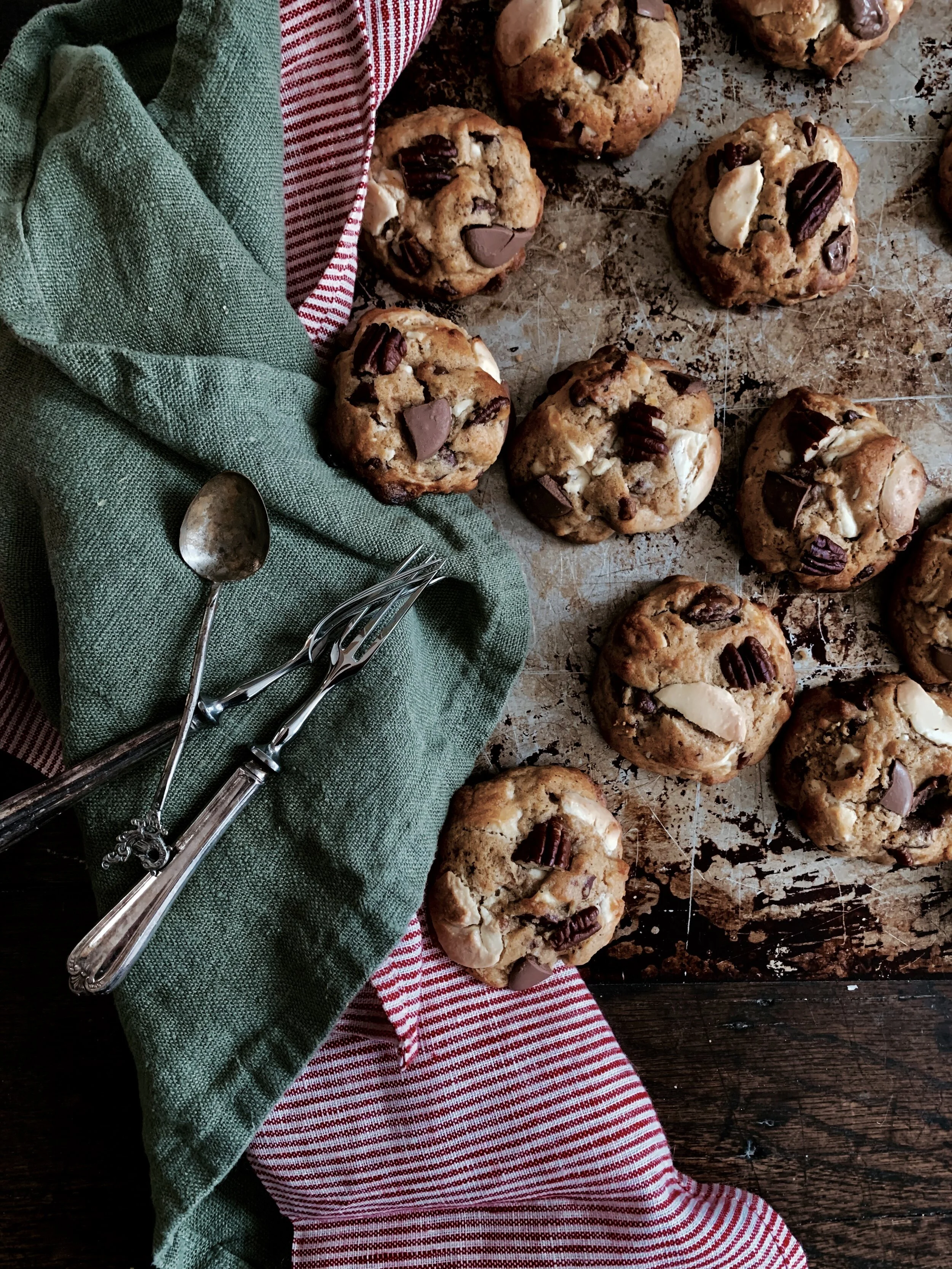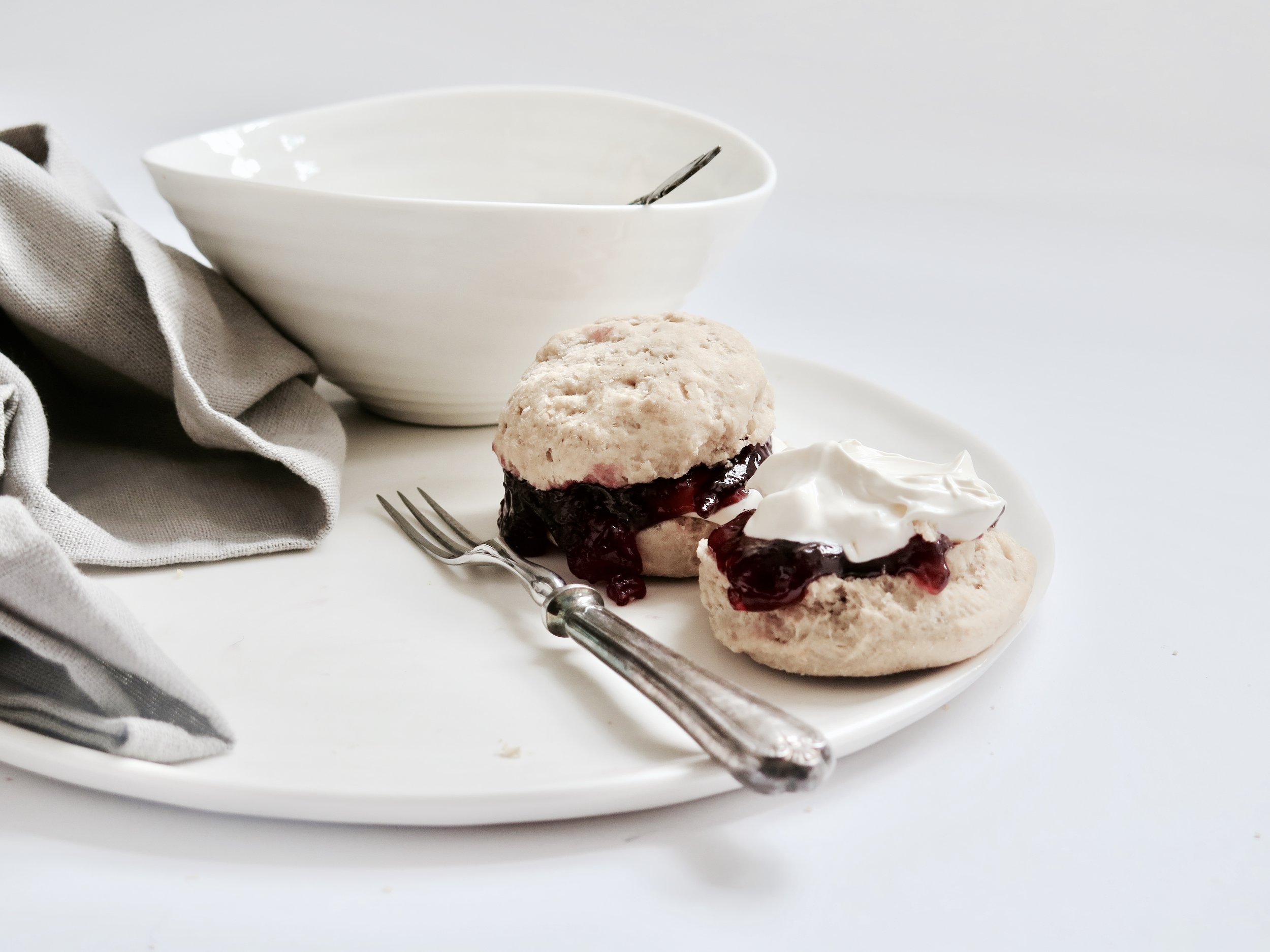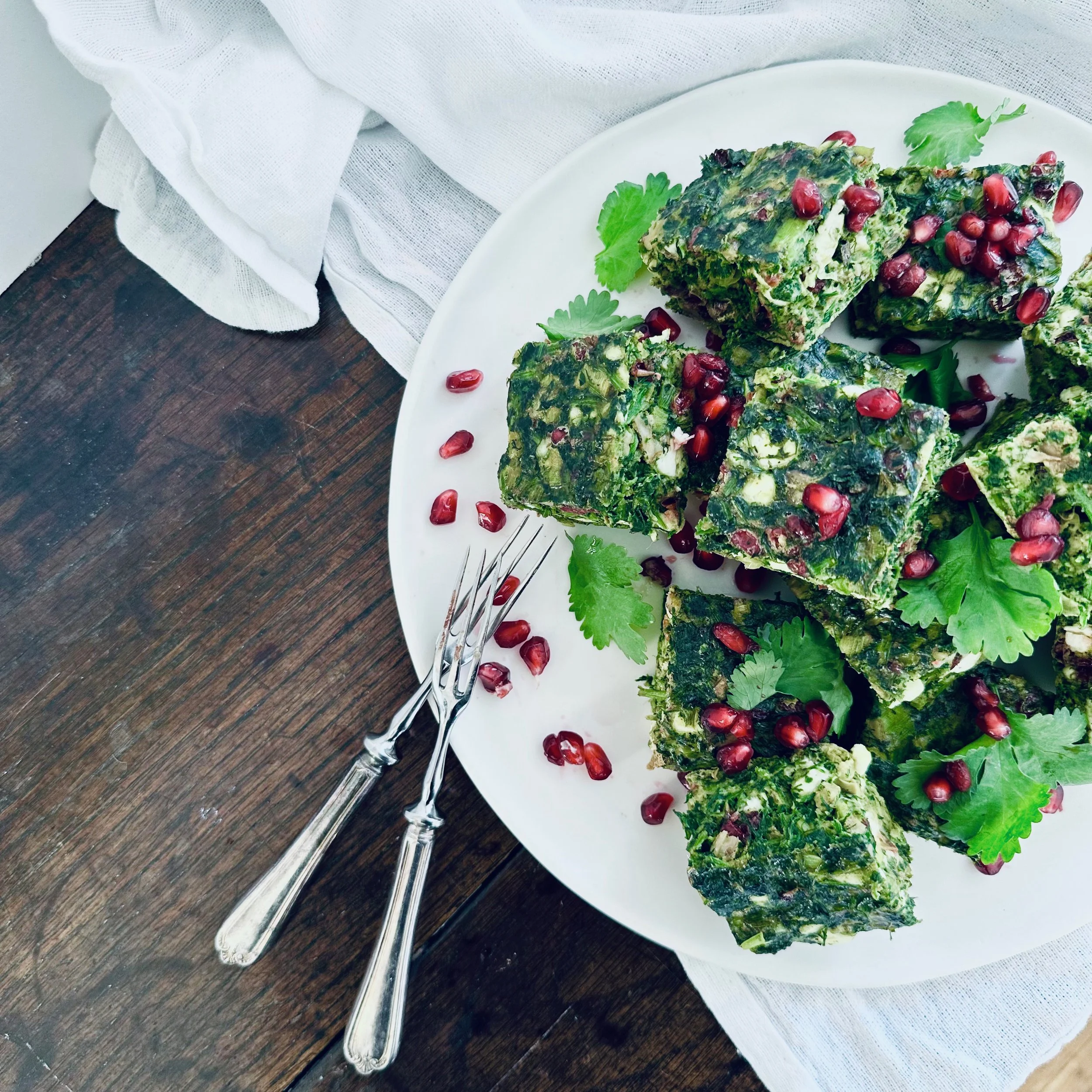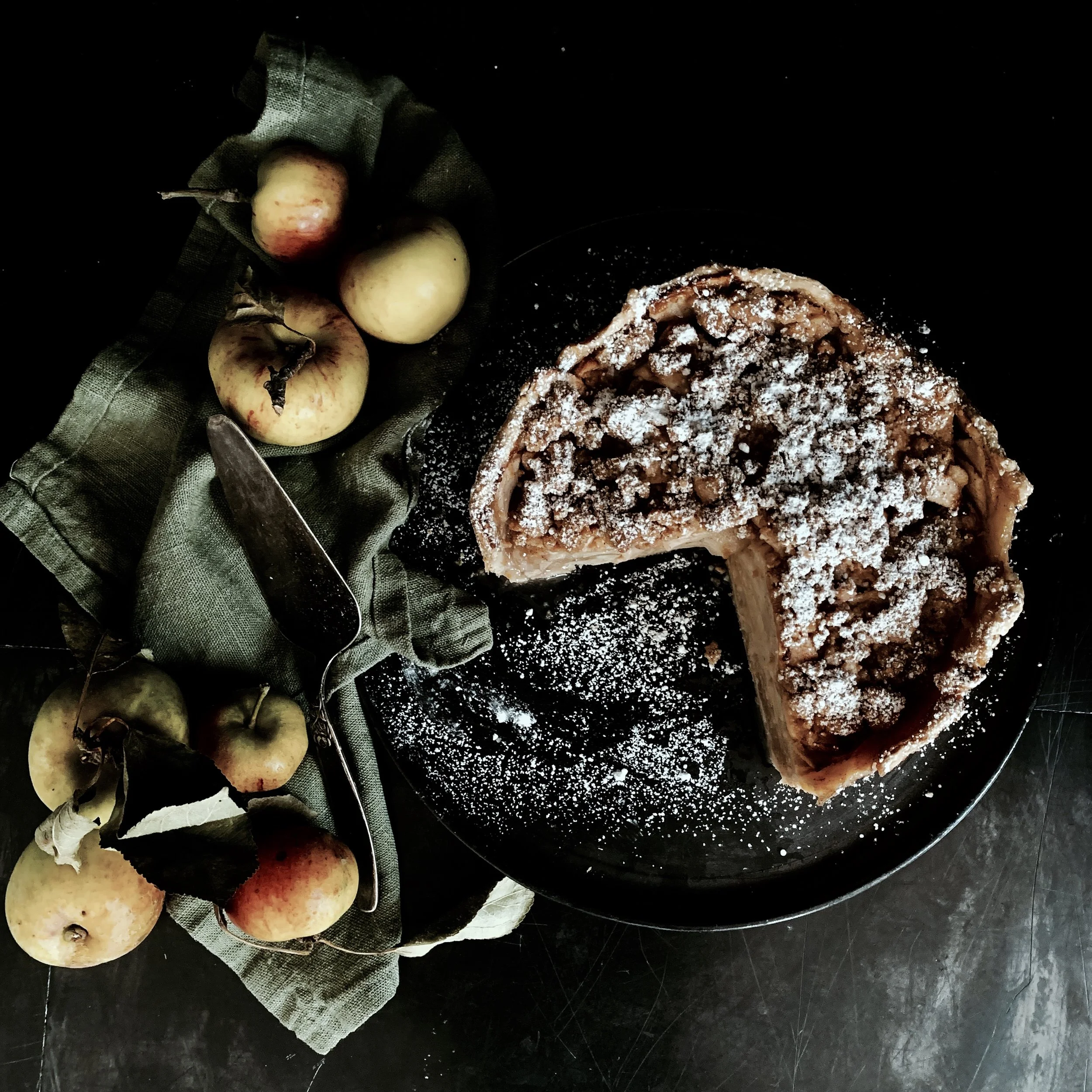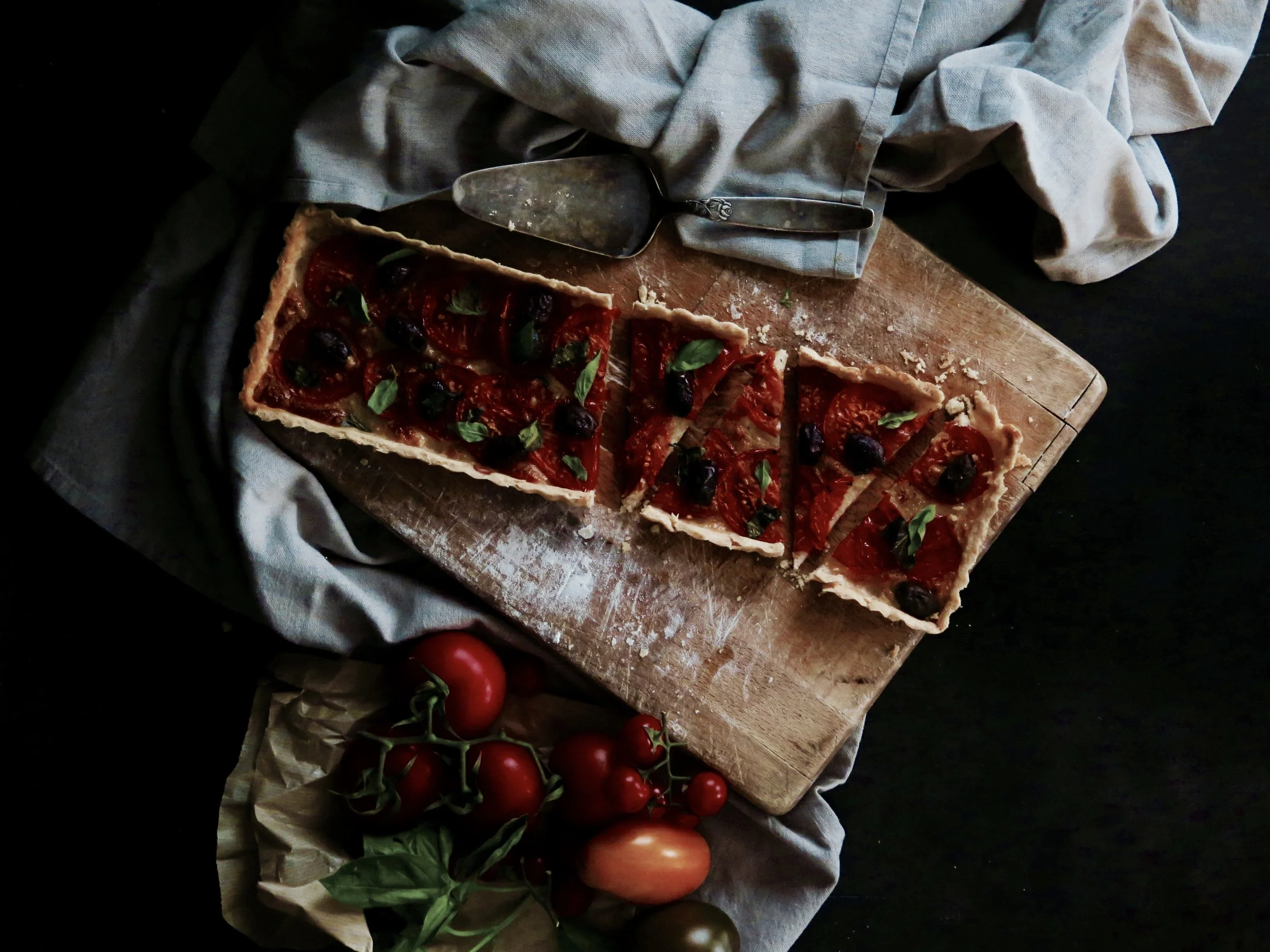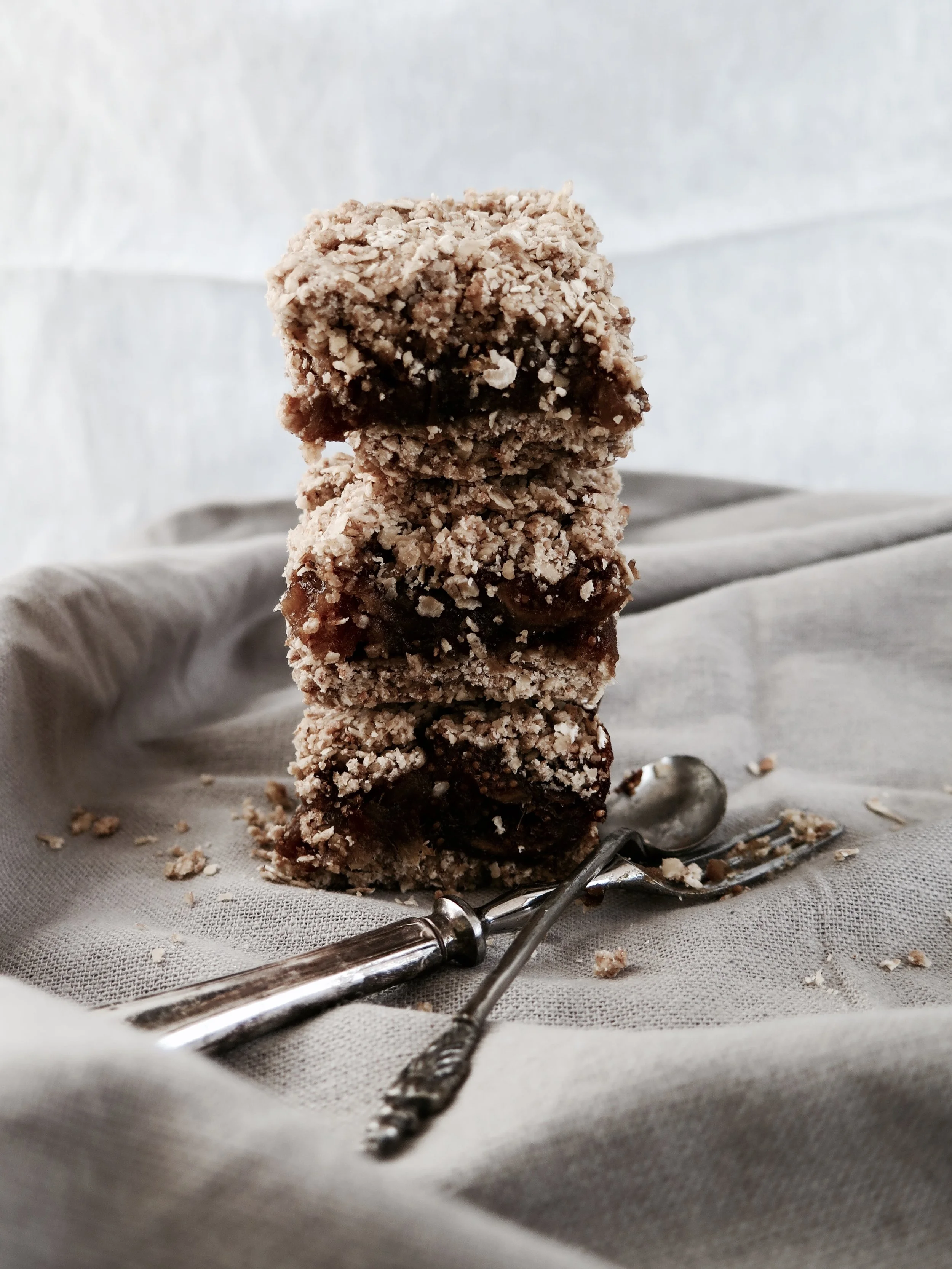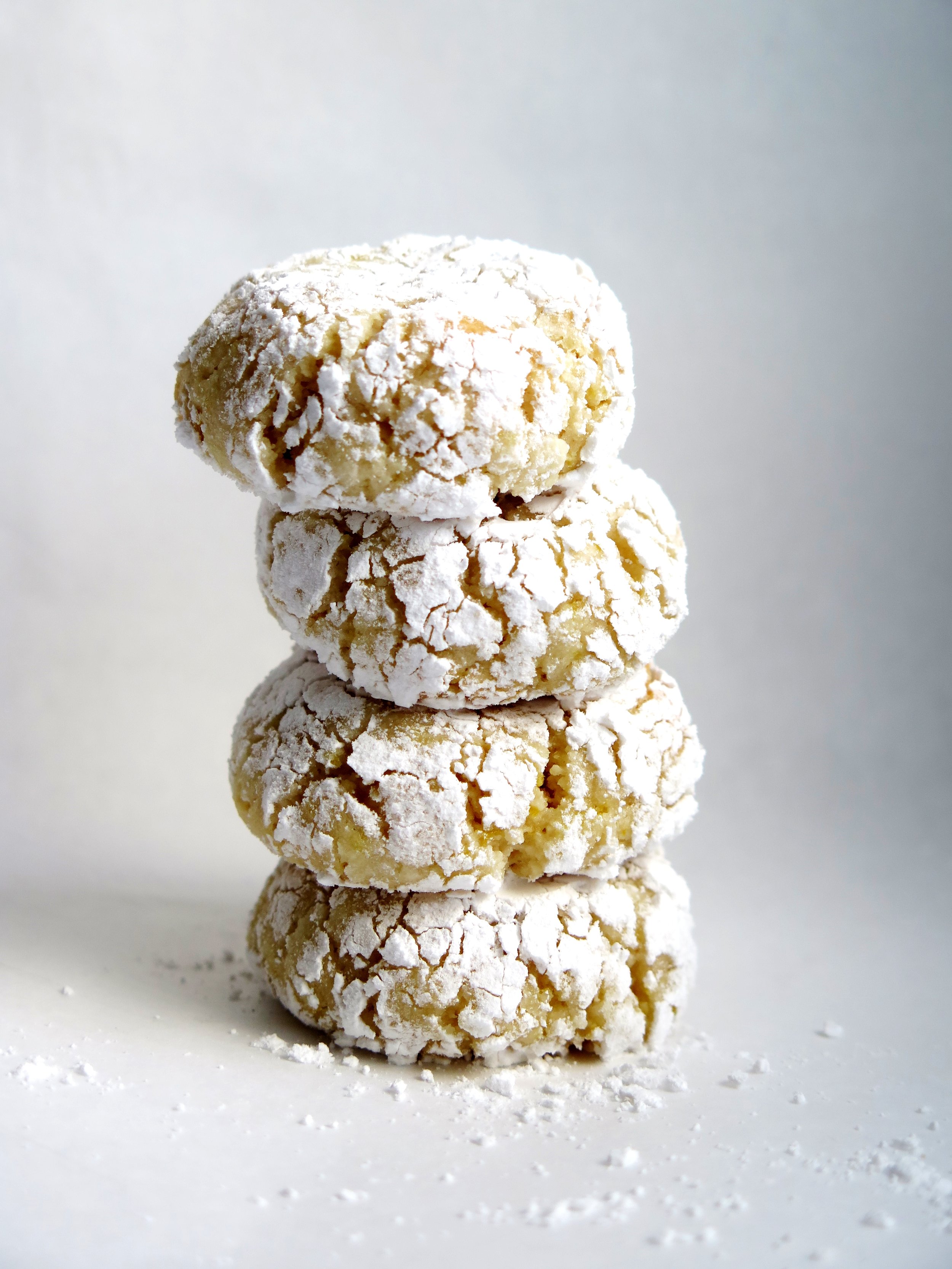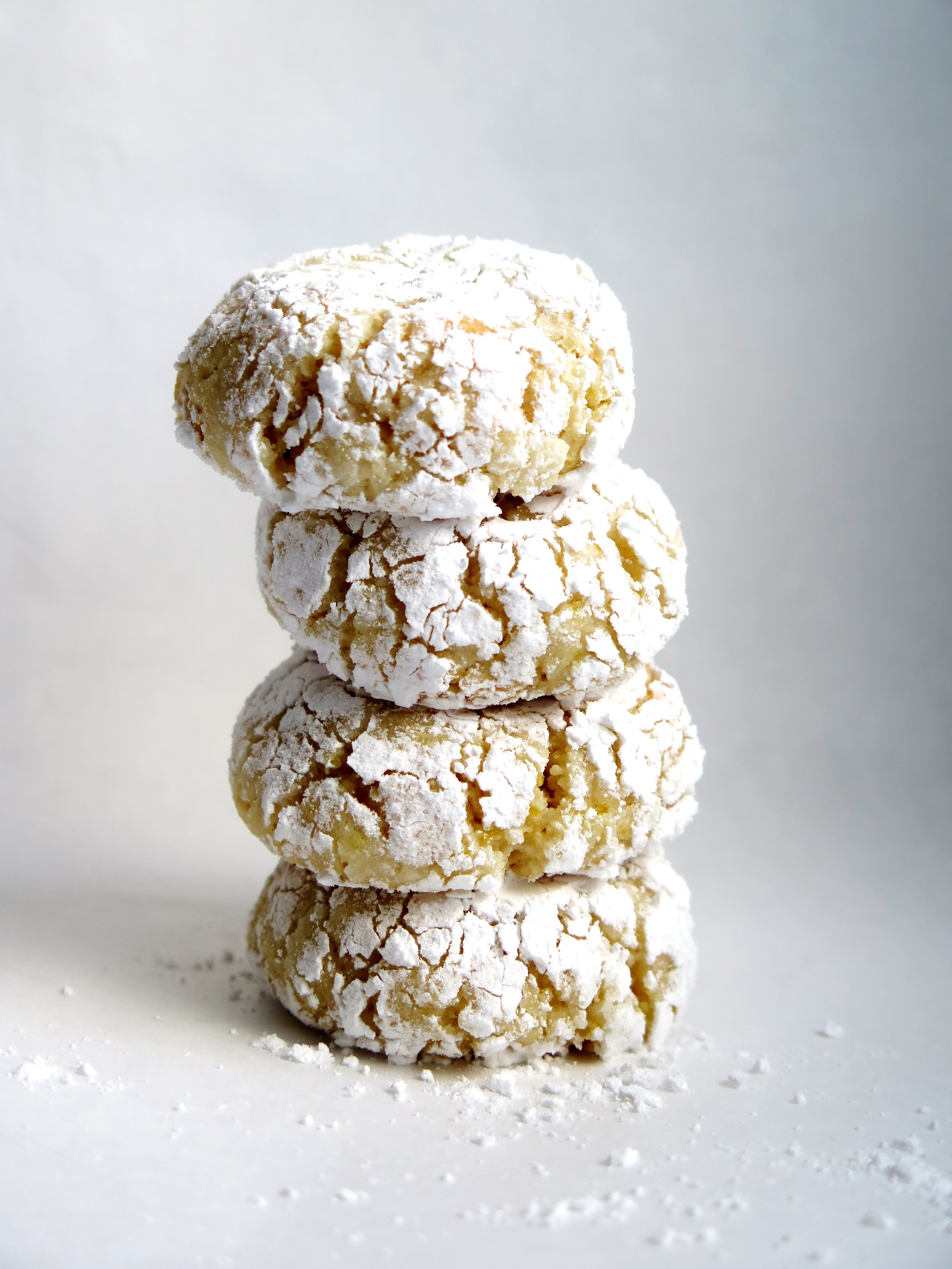It’s the perfect cake for vegans and non-vegans alike: no weird gums or chemicals or frogspawn-y aquafaba, and it doesn't even need them. It’s moist, sticky and absurdly moreish. It can stand proudly beside any egg-containing cake, and win over any vegan cake-hating sceptic. When I say it’s easy to make, I mean it is exceptionally easy. It can be whipped up in under 10 minutes and, if you're making mini loaves, it bakes within 10 minutes too.
Viewing entries tagged
tea
...& 14 Thoughts from the Kitchen Sink
From the moronic to the morbid, here’s an insight into what happens when I bake and let my mind wander:
- Drowning in a vat of sticky bread dough would probably be the worst way to die.
- When you sieve icing sugar and it puffs into the air in clouds, how many calories are there in one mouthful of air?
- Why do so many obscure meats taste like chicken and not beef?
- What is the significance of sometimes craving baby food - especially rusks, and pureed apple and banana?
- Why do we delude ourselves that avocado on toast has been ‘smashed’? I’ve never seen anyone smash an avocado. I suppose ‘smeared’ doesn’t have the same ring to it.
- If I could subsist on one food for the rest of my life it would most likely be oats.
- Nandos’ ‘hot’ sauce is anachronistic. It was created about 20 years ago and people’s (i.e.my brother’s and my) tolerance for heat has gone up. They should downgrade it to ‘medium’.
- What was the exact moment when someone decided to put sugar, milk, butter and flour together to make the very first cake?
- How do you know nigella seeds are nigella seeds and not mouse droppings?
- If 2017 was the year of slime porn, why can’t 2018 be the year of dough porn?
- Earlier this year some pig farmers tried to halt the use of pig terminology as connotative of greed. Imagine if other farmers were to do the same: we couldn’t exclaim something was cheesy, or call people ugly cows, or ask people with whom we’re angry if they want beef, or complain that bland people are vanilla, or exclaim that someone is mutton dressed up as lamb, or taunt cowards as being chicken…
- How many times in my life has a waiter spat in my food on purpose?
- Why do I have six jars of preserved lemons in my cupboard when I only use a small shaving of one once a year?
- The smell of freshly baked bread should be a perfume.
That’s enough musing for one day.
Here’s the recipe for an exceedingly luscious cake. It is succulent, and filled with roasted strawberries so that there is at least one deliquescing in every bite. The berries on the surface turn almost jam-like in the oven. Absurdly quick and easy to make, it is totally moreish.
NB. This cake can be made gluten-free by substituting the flour for gluten free.
Luscious Strawberry cake
Serves 6-8 (depending on level of greed)
Ingredients
85g unsalted butter, at room temperature
160g caster sugar + 2 tbsp for the topping
1 large egg
120ml milk
1 tsp vanilla extract
190g white spelt flour (or gluten-free equivalent)
1 1/2 tsp baking powder
1/2 tsp salt
400g strawberries, after having been hulled and halved
20cm diameter round springform cake tin, either totally lined with baking parchment (if you’re feeling lazy and you don’t mind crinkly cake sides), or thoroughly greased with butter and the base lined with a circle of baking parchment
Method
1) Preheat the oven to 180°C.
2) Either by hand or in a stand mixer fitted with the paddle, beat the butter and sugar together until soft, light and fluffy (which should take about three minutes). Then pour in the egg, milk and vanilla extract and beat to combine. It may look slightly curdled but that is not a problem.
3) Into the wet ingredients sieve the flour, baking powder and salt. Gently fold the dry ingredients through until the batter is smooth and fully combined. Pour into the prepared cake tin.
4) Arrange the strawberries cut side down in the batter. You make need to overlap some or push some down to fit them all in. Sprinkle the 2 tbsp of caster sugar over the top and place in the oven.
5) Bake for 45-55 minutes (depending on oven), checking after 30 minutes. You may need to cover the top with aluminium foil if the surface looks at risk of becoming too dark. When ready, the top should be a deep gold and a cake tester should come out batterless (moisture from the strawberries will prevent it from coming out totally clean).
6) Allow to cool on a wire rack and devour on the day, or within two days, of baking.
(Adapted from Smitten Kitchen)
HUNGRY FOR MORE?
Maybe they think that all the gluttony and swollen stomachs affect our ability to digest information, that all the turkey/mince/fruit/chocolate/stuffing becomes blinding and we are no longer able to read paragraphs of text. Instead, we have to have things numbered so as to reassure us that whatever we are reading won’t detract too long from the Christmas stasis.
Every newspaper or magazine clearly has some greedy journalist on its team who takes it upon him or herself to rate every mince pie out there to save us all the hard work. Then the subjective lists are compiled and played back to us year after year, despite the foods remaining the same, in the identical, consumable, numbered format.
In response to this, and inspired by an affront to my eyes when opening the newspaper magazine this weekend, I thought I would do a light review of the food adverts themselves:
WAITROSE
Apparently, it’s for fruit lovers: congealed, glistening and with blood/jam trickling through its rivulets. But what is it? Depends how you like your desserts, but I’ll pass.
1/5
SAINSBURY’S
I know Christmas is supposedly about family and coming together, but the picture of “grandma” with a prawn coming out of her head doesn’t conjure up any feelings of warmth for me
1/5
BOURSIN
I’ve caught members of my family spooning Boursin directly into their mouths. I was cynical at first about their Christmas rebrand with the addition of the “merry” epithet. But somehow, heady with garlicky creaminess, it has caught on in my household – we are now asking each other whether we’d like some “Merry Boursin” on our toast.
4/5
LIDL
Lidl has gone down the particularly salivating route in showing us the turkeys pre-slaughter. They are relaxing free range by a bale of hay with the sun shining to stained glass effect through the translucent wattles. Delicious.
0/5
Anyway, with all this Christmas “magic” abounding (and as a remedy for all this gaudiness), we might as well move on to an actual “magic” cake. Making a cake is magical enough, but there is a childlike joy when you put a homogeneous mix into the oven and it emerges, burnished, in perfectly ordered layers. This particular magic cake is like a perfectly formed French entremet, but without the effort. All it requires is eggs to be separated and whisked and somehow it all falls into place. When making the speculoos topping, I would advise making a bit extra to allow some innocent “sampling” during the process (it’s ambrosial).
Ingredients
Speculoos layer
300g Speculoos cookies + 100g for decoration
220ml unsweetened condensed milk
¼ tsp salt
Cake
3 eggs, separated
75g caster sugar
90g unsalted butter
50g plain flour
¼ tsp salt
300ml milk
4 small pears, peeled, cored and diced into 1cm cubes
21cm square cake tin (or round tin with similar area) fully lined with baking parchment. It doesn’t matter if the tin is marginally larger or smaller
Method
1) Preheat the oven to 150°C
2) Put all the ingredients for the speculoos layer into a blender and blitz until smooth, and set aside.
3) Melt the butter and set aside to cool. In a bowl (if doing by hand) or electric mixer beat the sugar with the egg yolks until thick and pale. Pour in the butter and 150g of the Speculoos layer and gently combine. Then sieve in the flour and salt and fold to combine. Pour in the milk and combine.
4) In the bone-dry bowl of an electric mixer or by hand, whisk the egg whites vigorously until they thicken and hold their shape in stiff peaks. Very gently fold them into the batter, taking care to preserve the aeration.
5) Scatter the diced pear evenly on the bottom of the cake tin, then gently pour the batter on top. Smooth the surface with a knife and place in the oven to cake for 35 minutes. The cake will still be soft when you remove it from the oven but this is how it is meant to be. Put it onto a rack to cool to room temperature, then place in the fridge for an hour to set.
6) To serve, lift the cake out of the tin on the serving plate using the baking parchment and remove baking parchment. I choose to slice off the cake edges in order to better expose the layers. Spread the remaining speculoos layer on top and over it crumble the decorative speculoos cookies.
Recipe adapted from "Magic Cakes" by Christelle Huet-Gomez
Adorned with dew drops of glaucous fruits, the damson tree was innocent in its fairy tale perfection. Plump and firm, tart and succulent they were ideal contenders for picking. There seemed at first glance to be very few, but as the minutes rolled by, our bags heavier and the ladder creaking, the tree continued to proffer its bounty. The result: 6kg of damsons and a swollen stomach from ones that never quite made it into the bag.
Our supply of sugar rather pitiful in the wake of the unsurpassed abundance, I heaved an Olympian quantity back from the supermarket. The one bag that decided to split has left a coating of sticky grit on any coins that I dig out of the corners of my bag.
Then on to the stove went the damsons, the heated sugar and a touch of water. They blistered, bubbled and broke out of their skins. The stones rose to the surface like witches on trial and had to be picked out one by one. Meanwhile the mixture boiled and thickened, giving off a foamy pink effervescence that I carved off as it supposedly tastes slightly bitter (although I rather enjoyed spooning it directly into my mouth). Then as it reached its rich amethyst depths and a satisfying viscose texture, I took it off and poured it into the sterilised jars: therapeutic and deeply satisfying…the first-time round.
But as I tried to leave the kitchen I was bludgeoned with another 3kg worth of damsons. I was pelted, too, with threats of waste and rotting fruit if I didn’t make jam immediately. The kitchen became heated with the upset from my father who had cultivated and nurtured the tree for years.
So, I gave in and became a slave to the damson tree once more, boiling, straining, stirring pouring. And now we have half a fridge thronging with jar upon jar of jam. And what does one do when he or she has a year’s supply of jam? Well, I find eating it straight from the jar perfectly acceptable, but others need a medium as an excuse. So I made scones. These are not the dry, stale and overly sweet ones that leave you desperately seeking a currant to relieve you from the accumulating doughy mass at the top of your palate. These are soft, light, moist and crumbly. Rustic in shape, they are best eaten immediately or on the same day (though it is unlikely they will survive longer).
Spelt Scone Recipe – makes 12
500g white spelt flour (can be substituted with plain)
4 ½ tsp cream of tartar
2 tsp bicarbonate of soda
(optional: 2 tbsp sugar if would like them sweet)
1/2 tsp salt
125g cold unsalted butter, diced
300ml milk
1 egg, beaten, for egg wash
6cm round cookie cutter
Large baking sheet, lined with baking parchment
Method
1) Preheat the oven to 220°C.
2) Into a large bowl sift all the dry ingredients. Add in the butter and with fingertips rub it into the dry ingredients until like damp sand. Pour in the milk and very gently fold in until just combined (there may still be pockets of flour).
3) Turn the dough out onto a floured surface and knead it lightly for about 10 seconds. Roll out to a 3cm thickness and then cut out as many scones as possible. Lightly re-knead the scraps of dough and roll out once more to cut out the last remaining scones. Space them out on the tray and blush with the beat egg. Place in oven to bake for 8-10 minutes until they are shiny and golden.
Damson Jam Recipe (makes about 3kg, 9 jars)
NB. This recipe can be adapted for any number of damsons by maintaining the ratio
2kg damsons (slightly under-ripe and not too soft)
2kg sugar
200ml water
9 jam jars, sterilised
Method
1) Pour sugar into an over proof dish and place in oven heated to a low temperature (around 120°C) while the damsons are prepared. Place a couple of small plates into a fridge to cool – these will be used to check the jam’s consistency later.
2) Grease a large stainless-steel pot with butter to prevent the fruit from sticking. Then pour in the damsons and water and stew over a medium-low heat, stirring gently until the damsons’ skins break. Pour in the warmed sugar and stir over medium-low heat until the sugar has dissolved.
3) Increase the heat to medium-high and allow to boil (controllably), stirring occasionally to prevent the fruit from sticking. After a few minutes, as the fruits break down, a pink foam will rise to the surface. Using a slotted spoon, siphon this off into a bowl. If some remains it won’t ruin the jam, it just doesn’t taste as pure as the rest. Then, as the stones begin to rise up, siphon off those too.
4) After about 15 minutes of boiling, when all the stones have been removed, pour a teaspoon of the liquid onto a cold plate. Let it sit for about a minute then tilt the plate, if the liquid is no longer watery, with a viscosity between a sauce and a jam, and wrinkles when pushed with the finger, it is set. For the more scientifically-minded, it should be 105°C on a sugar thermometer. Pour the jam into the sterilised jars and allow to come to room temperature before sealing them with lids.
HUNGRY FOR MORE?
These are not those tooth-breaking, individually wrapped little rocks you might impulse buy at coffee shops. They’re soft, aromatic and chewy (and great for the dentally challenged).
 Amaretti are also perfect for coeliacs, and can make a wonderful dessert paired with ice cream and a tangy berry sauce (see recipe here).
Amaretti are also perfect for coeliacs, and can make a wonderful dessert paired with ice cream and a tangy berry sauce (see recipe here).
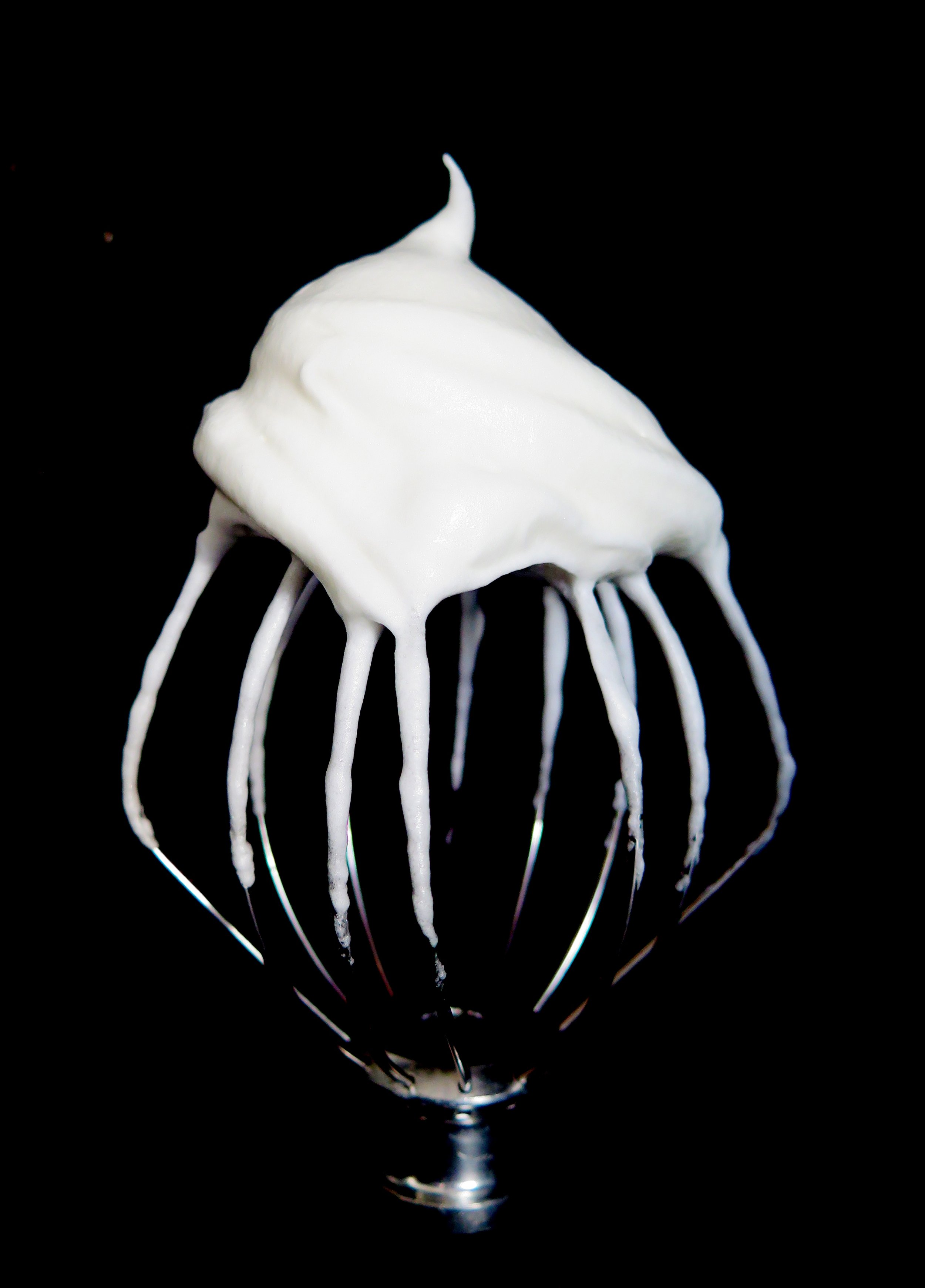 This recipe should be paired with my one for summer berry lemon curd tarts (see recipe here) which awkwardly leaves you with spare egg whites. Don’t waste them, make these instead –you won’t regret it…
This recipe should be paired with my one for summer berry lemon curd tarts (see recipe here) which awkwardly leaves you with spare egg whites. Don’t waste them, make these instead –you won’t regret it…
Ingredients (makes 35 small cookies)
360g ground almonds
220g caster sugar
finely grated zest of 2 lemons
½ tsp salt
115g egg white (3 large eggs, approx.)
4 tsp honey
¼ tsp almond extract
100g icing sugar, sieved, for rolling
1 large baking tray lined with baking parchment
Method
1.) Preheat oven to 170˚C. In a large bowl mix together the ground almonds, sugar, lemon zest and salt, and set aside.
2.) Pour the egg whites into the bone dry and non-greasy bowl of an electric mixer. Whisk on high speed until soft and frothy peaks form. Pour the honey into the eggs and continue to whisk on a high speed until the peaks are glossy (see above photo). Sprinkle the almond extract into the eggs and whisk together very briefly at a low speed just to combine.
3.) Very gently fold the whisked egg white mixture into the dry ingredients. They will combine to form a soft and sticky paste.
4.) Using your palms, roll 20g at a time of the mixture into spheres (roughly 2.5cm in diameter), and then roll each generously in a bowl of icing sugar. Repeat and arrange on the tray, leaving at least 3cm between. Use the tines of a fork to slightly flatten the amaretti spheres. Place the tray in the oven to bake for 8-12 minutes until they are beginning to turn golden on the outside but are still soft inside. They will continue to cook as they cool.


